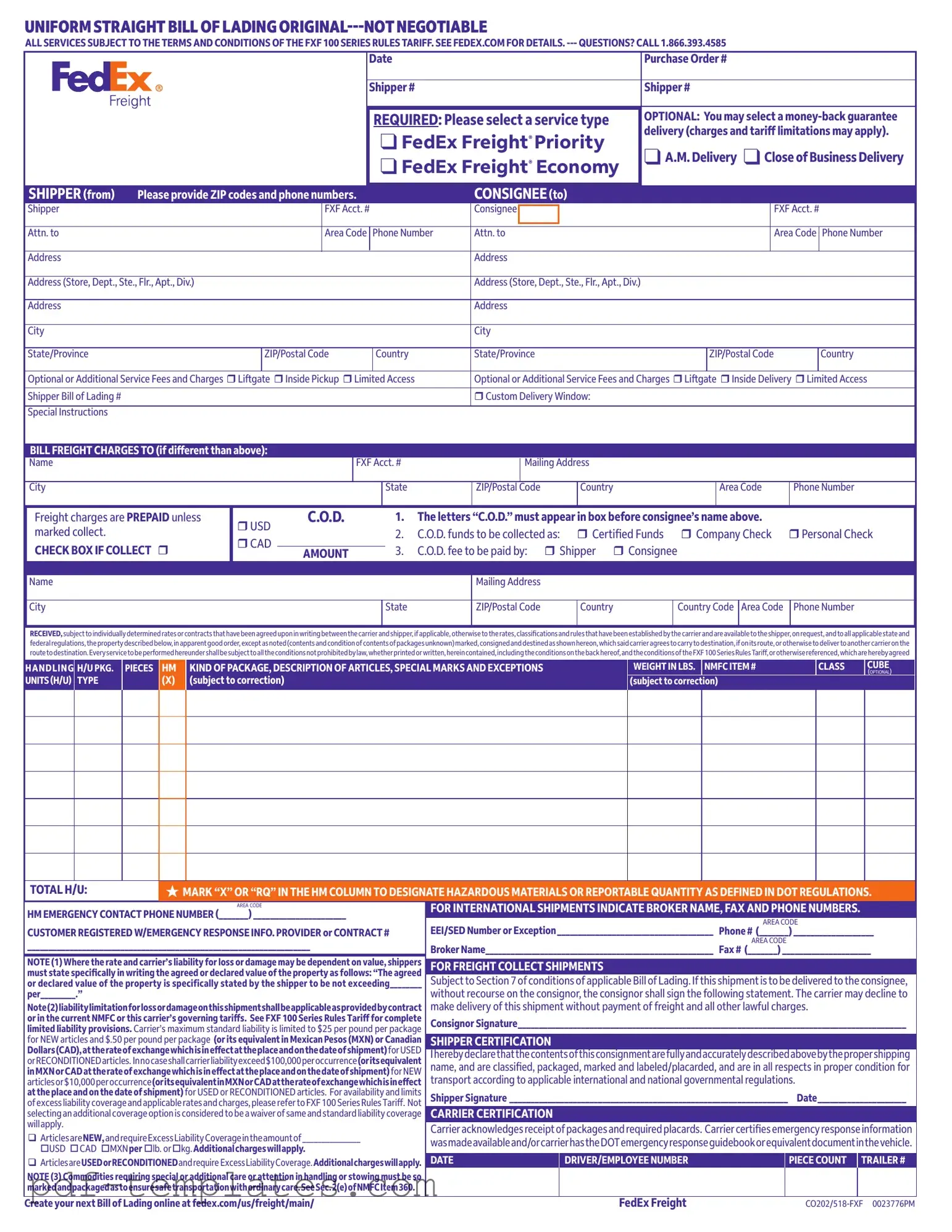The FedEx Bill of Lading is similar to a Commercial Invoice, which is often used in international shipping. A Commercial Invoice serves as a bill for the goods being shipped and includes details such as the buyer and seller's information, a description of the items, their value, and the terms of sale. Like the FedEx Bill of Lading, it acts as a receipt and provides essential information for customs clearance. Both documents are crucial for ensuring that shipments comply with regulations and facilitate smooth transportation across borders.
Another document comparable to the FedEx Bill of Lading is the Air Waybill. This document is specifically used for air freight and serves as a contract between the shipper and the airline. It includes similar information regarding the sender, recipient, and details about the shipment. The Air Waybill is non-negotiable, just like the FedEx Bill of Lading, meaning it cannot be transferred to another party. Both documents ensure that the carrier has the necessary information to transport the goods efficiently.
The Delivery Receipt is yet another document that shares similarities with the FedEx Bill of Lading. This receipt is provided upon delivery of the goods and serves as proof that the items were received in good condition. It typically includes the date of delivery, the condition of the items, and the signatures of both the carrier and the recipient. Like the Bill of Lading, it is an important record that can be used in case of disputes regarding the shipment.
A Packing List also bears resemblance to the FedEx Bill of Lading. This document details the contents of a shipment, including item descriptions, quantities, and weights. While the Bill of Lading serves as a contract for transportation, the Packing List provides a comprehensive breakdown of what is being shipped. Both documents are essential for inventory management and can be used to verify that the correct items have been delivered.
The Pro Forma Invoice is another document similar to the FedEx Bill of Lading, especially in international trade. This preliminary invoice outlines the terms of a sale before the actual transaction occurs. It includes details about the goods, pricing, and shipping terms. While it is not a demand for payment, it serves a similar purpose in providing necessary information for customs and shipping, much like the Bill of Lading.
The Shipper's Letter of Instruction is a document that provides specific instructions from the shipper to the carrier. It often accompanies the Bill of Lading and includes details on how the shipment should be handled, such as special packaging or delivery instructions. Both documents work together to ensure that the carrier understands the shipper's needs and expectations for the shipment.
A Freight Invoice is another document that shares characteristics with the FedEx Bill of Lading. This invoice outlines the charges associated with the transportation of goods. It includes details such as the service type, weight, and any additional fees incurred during shipping. Similar to the Bill of Lading, it serves as a record of the transaction between the shipper and the carrier, ensuring transparency in billing.
Lastly, the Certificate of Origin is a document that certifies the country where the goods were manufactured. While it serves a different purpose than the FedEx Bill of Lading, both documents are often required in international shipping. The Certificate of Origin helps customs authorities determine tariff rates and eligibility for trade agreements, while the Bill of Lading ensures the safe transport of goods. Both are vital for compliance with international trade regulations.
